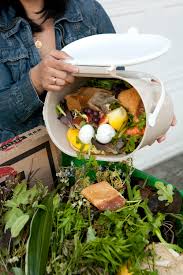
ICMA has permission to use
Earth Day is right around the corner and one of the most earth-friendly practices has come under fire recently—recycling. Commodity prices have dropped precipitously (petroleum products nearly 50%) and cities, towns, and counties are asking and being asked, “Is it worth it?” Here are a few ideas to help weather the downturn.
- Set a good example – Does your local government use products made from recycled materials? Work with your purchasing director to prioritize products with significant amounts of post-consumer content to help to grow and diversify the market for recyclables. Let your residents know what you’re up to and your good example may change household purchasing habits as well.
- Growing Power – Take a lesson from this innovative nonprofit that turned food waste, which is the number one ingredient in U.S. landfills, into “healthy, high-quality, safe, and affordable food.” This presentation covers the system used and the win-win-win social, economic, and environmental benefits that resulted.
- Use economic development incentives – California has created Recycling Market Development Zones. The program offers attractive loans, technical assistance, and free product marketing to businesses that use materials from the waste stream to manufacture their products. Local governments kick-in incentives might include relaxed building codes and zoning laws, streamlined local permit processes, reduced taxes and licensing, and increased and consistent secondary material feedstock supply. In the RecycleStore, you can find anything from floor mats made from recycled tires to food containers from recycled plastic bottles. Similar initiatives in the city of Austin generated nearly a billion dollars in economic impact last year.
- Flip the switch – While some cities and counties have avoided the political fallout from fee-based trash collection, about 7,000 communities are using Pay-as-You-Throw (PAYT) programs. Research verifies that these programs have increased recycling, helping communities achieve goals set back in the early 2000s. The revenues also can help fund recycling programs by getting folks who landfill most of their household waste, to help pay for increase costs of recycling.
- Don’t Stop Believing – While the costs may not justify the benefits right now, commodity prices fluctuate and will bounce back at some point and the costs of the environmental damage done by greenhouse gases is estimated in this article to be $8 billion to $12 billion per year. As this article points out, after communities have done such great job of getting residents in the habit of recycling, pulling the plug to wait out the downturn is not a good idea.
We’d love to hear what your community is doing. Please share a comment with us.
New, Reduced Membership Dues
A new, reduced dues rate is available for CAOs/ACAOs, along with additional discounts for those in smaller communities, has been implemented. Learn more and be sure to join or renew today!
